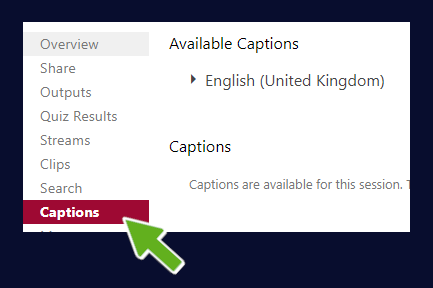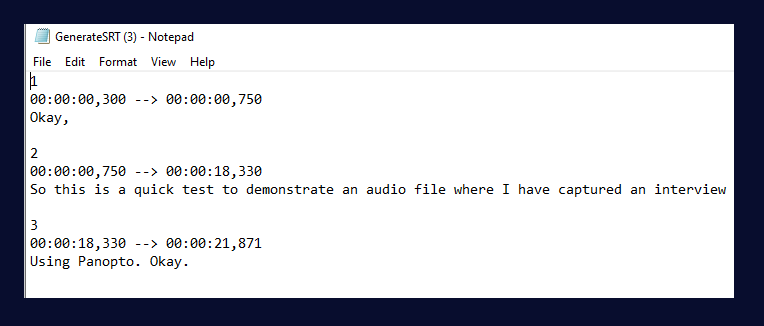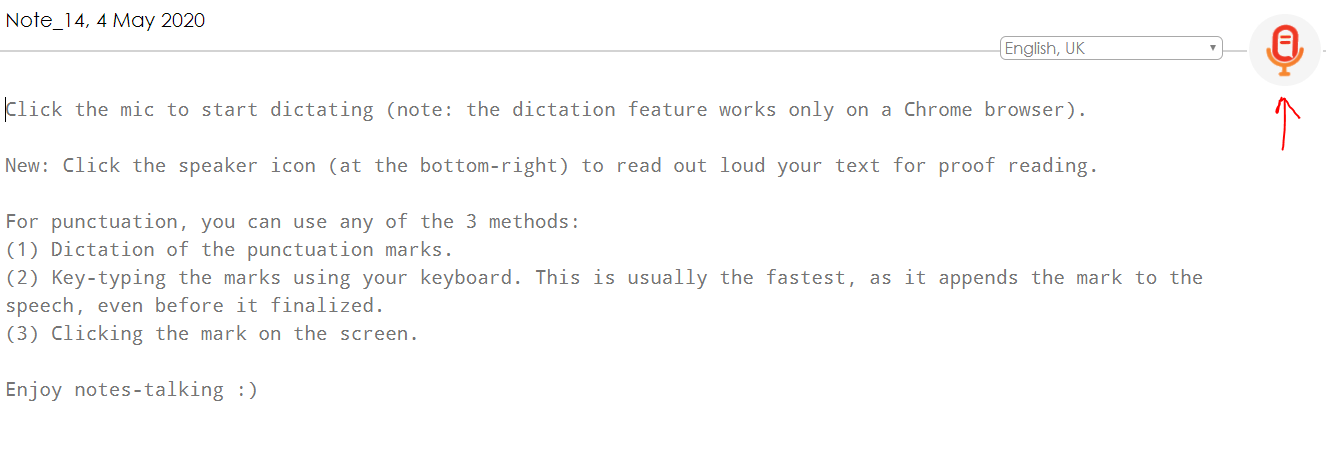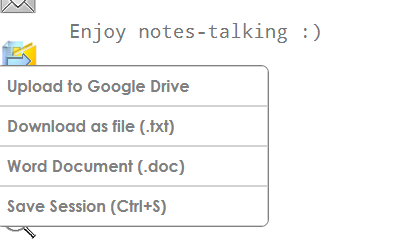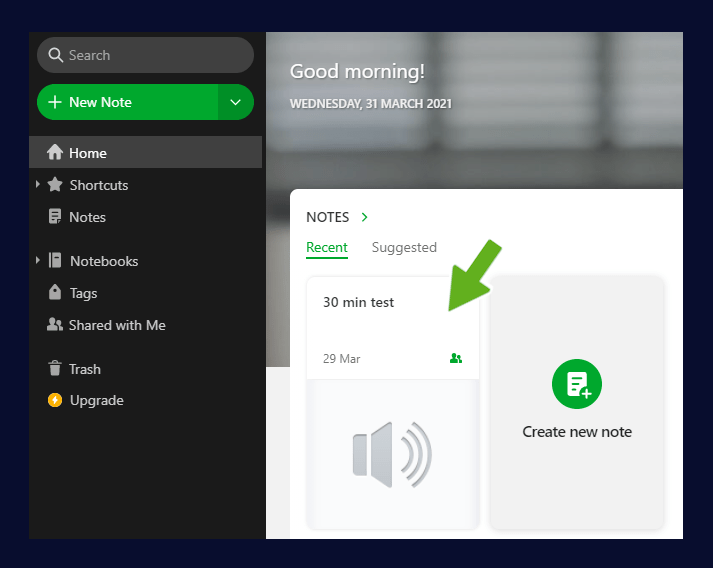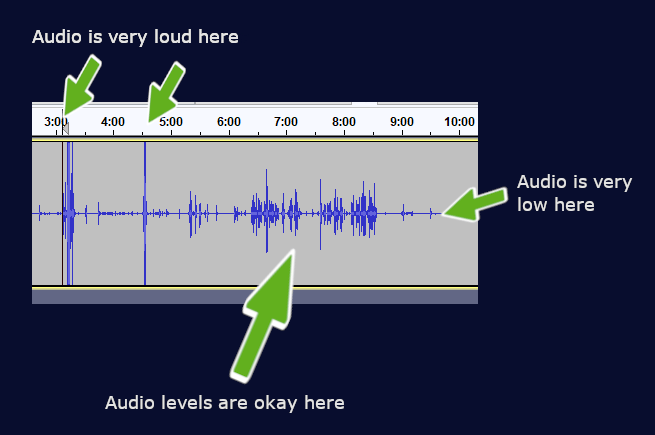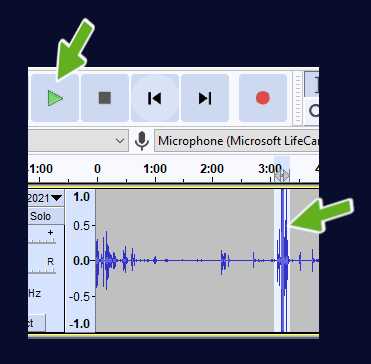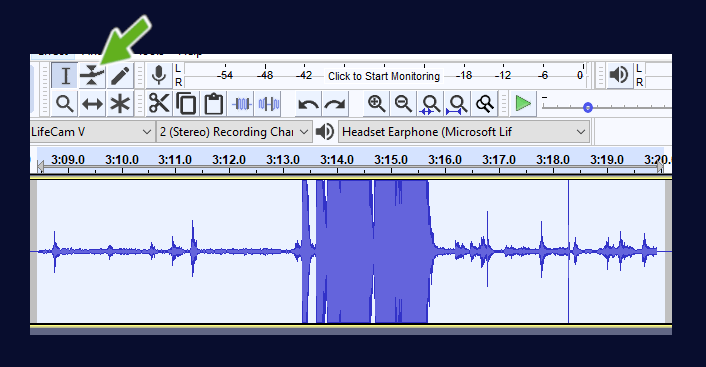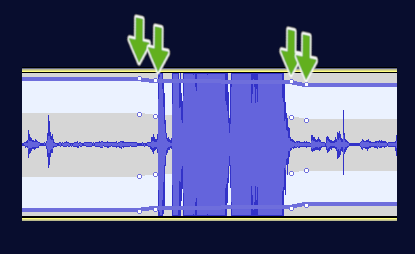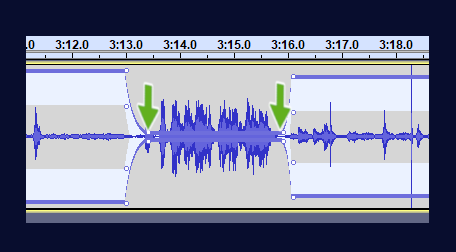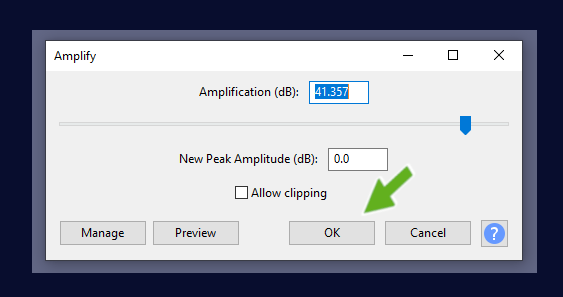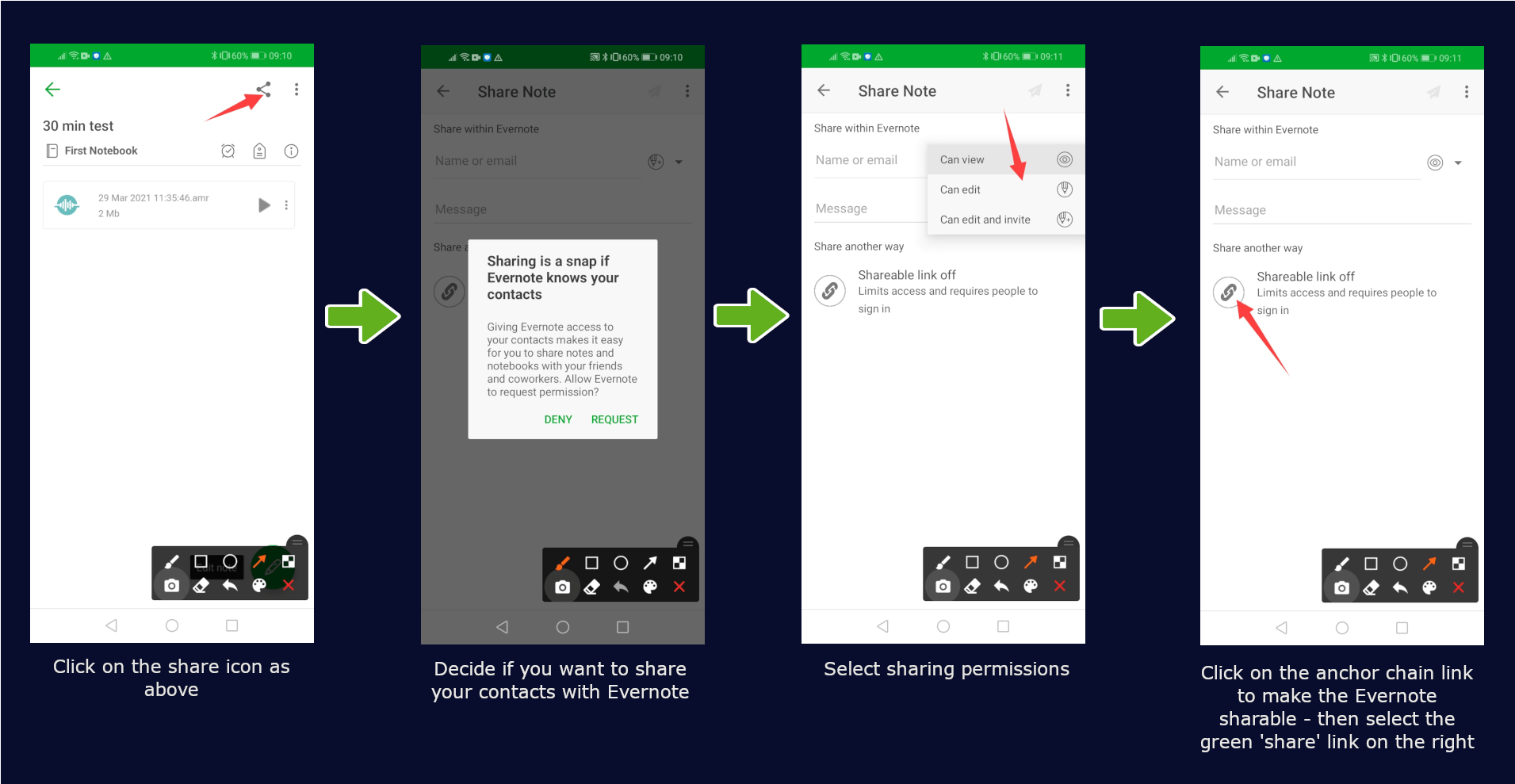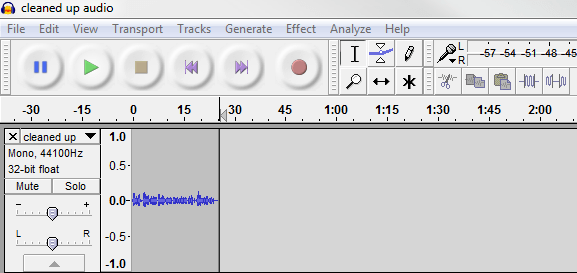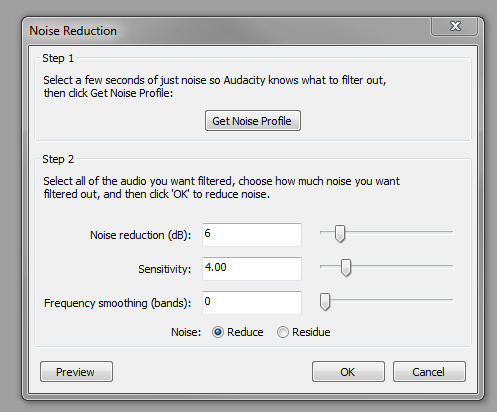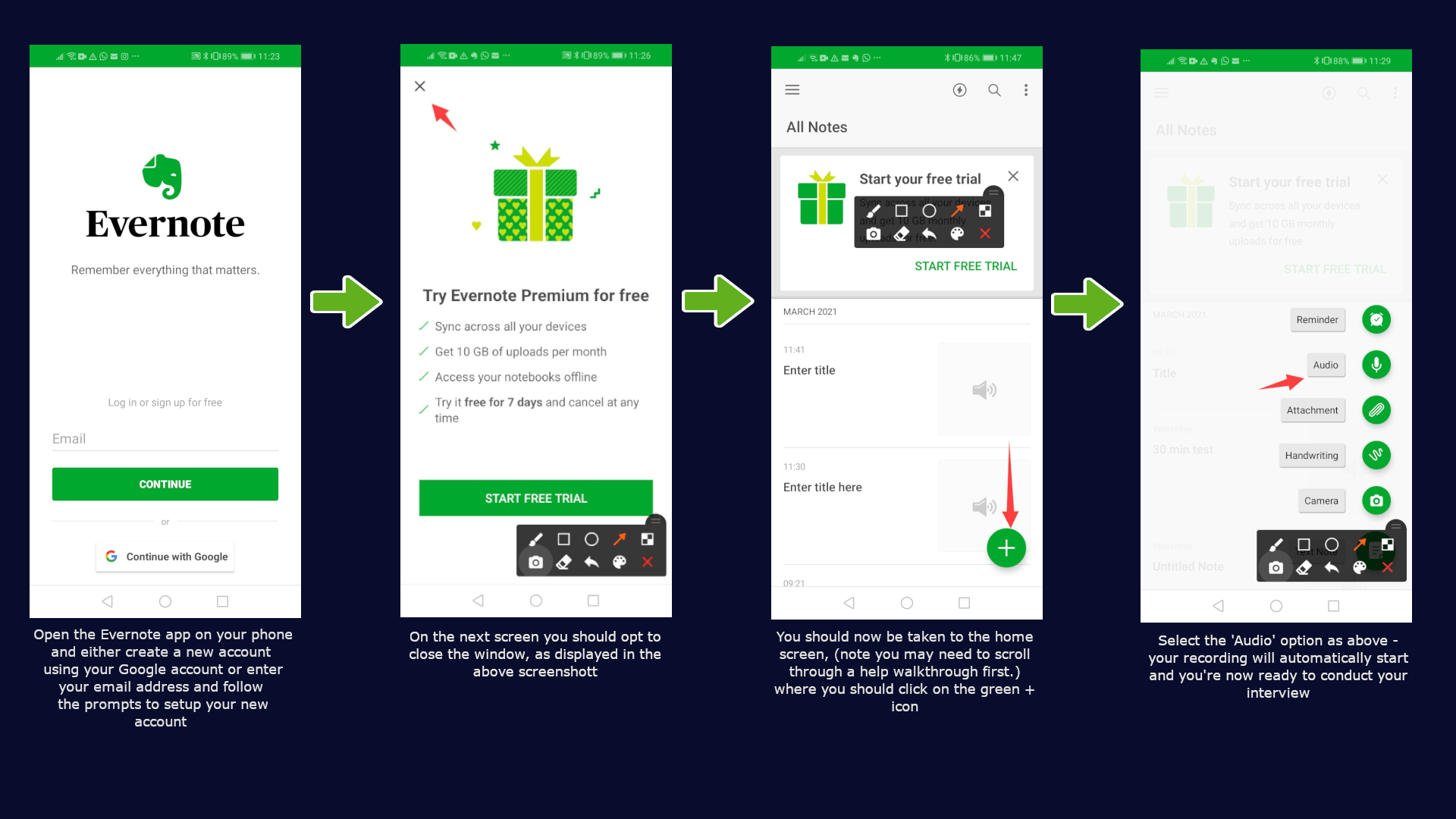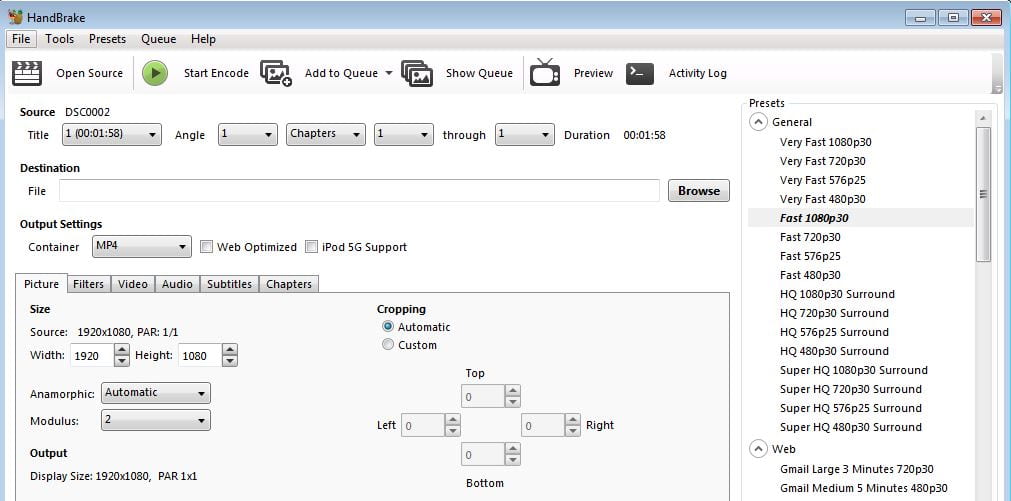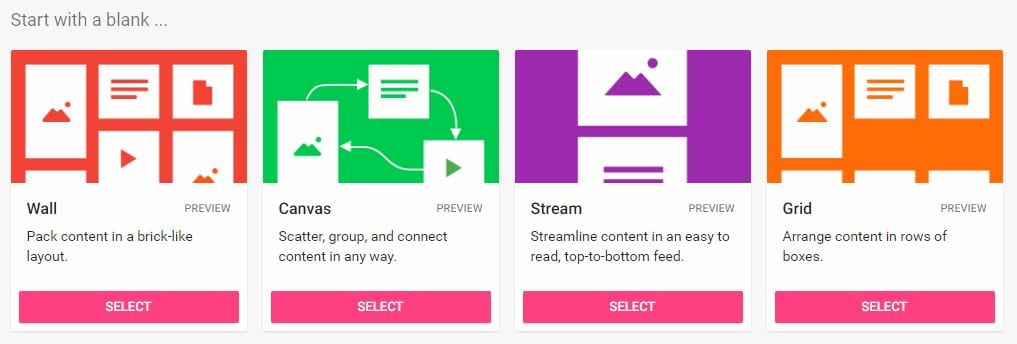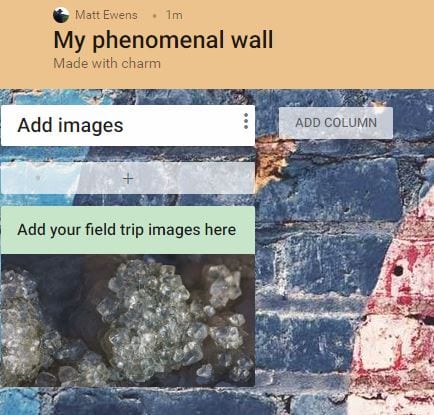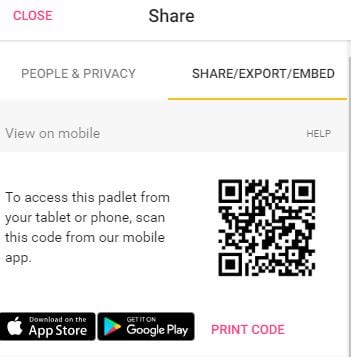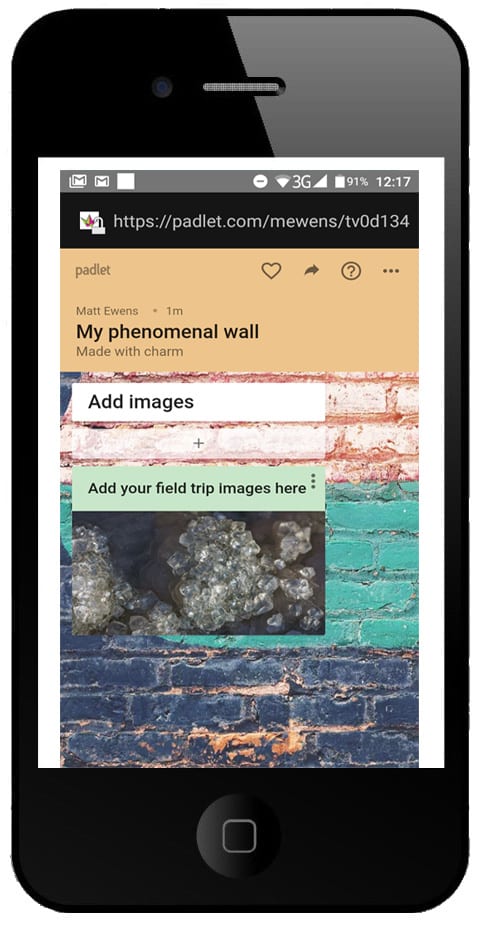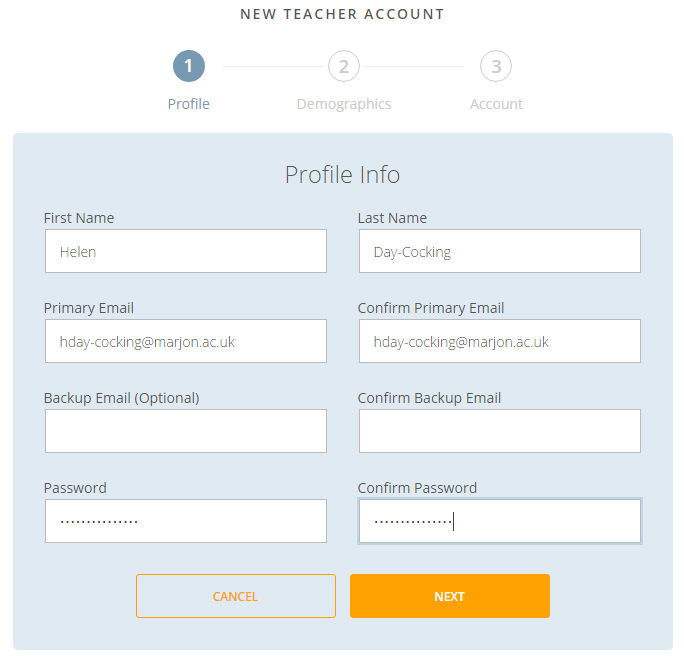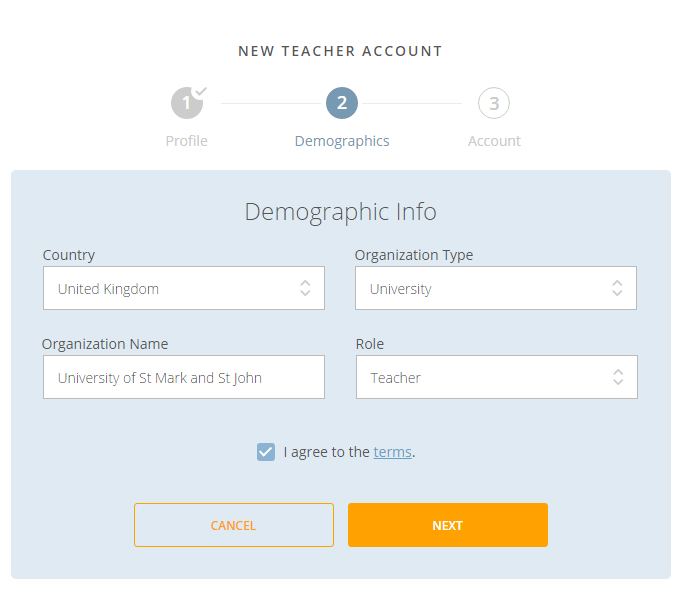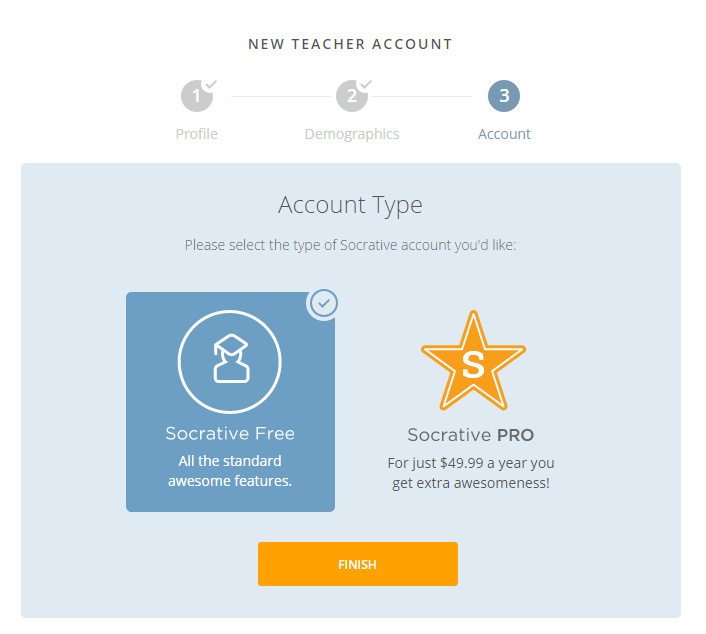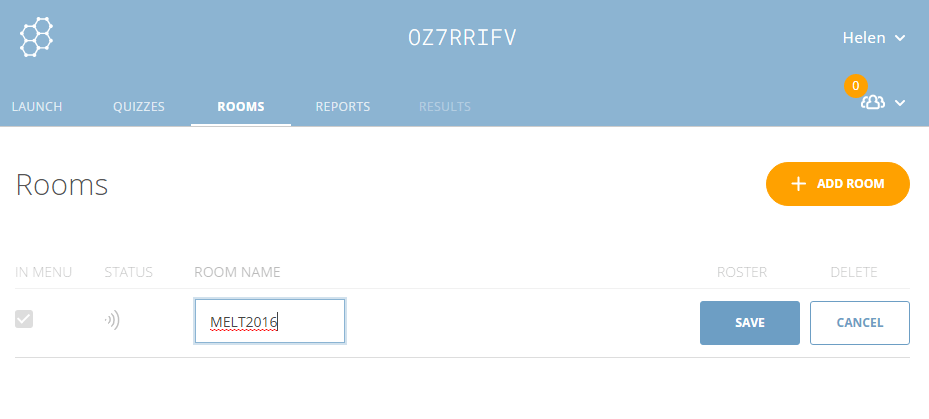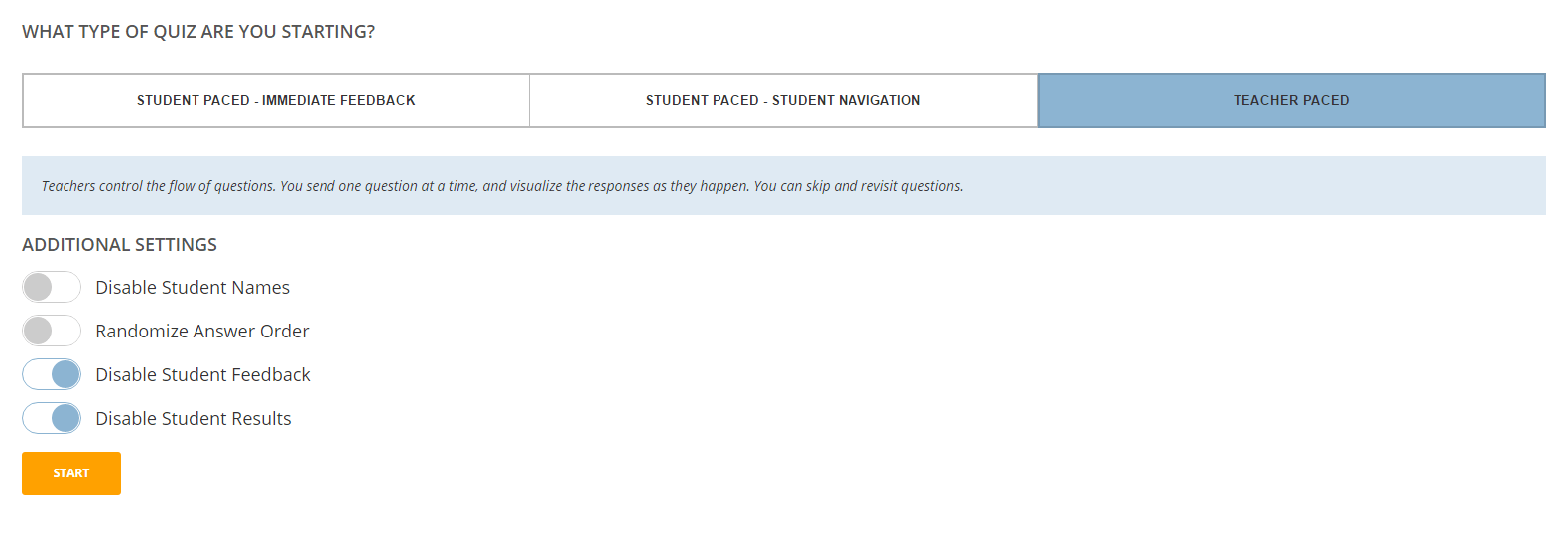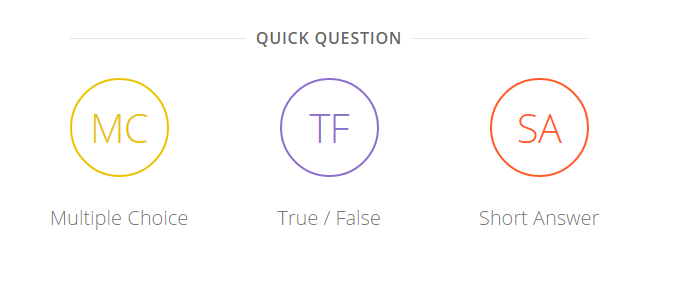Digital tools can be used for a variety of reasons, whether for interactive quizzing or to transcribe audio to text. Why not explore the below tools and get inspired!
Audio transcribing & editing
How to get a text transcription for any video
Recommended transcription method *
Thankfully, video captioning has improved greatly in recent times. Automatic captions for the most part are quite accurate and with Panopto you can now not only add automatic video captions, but download a complete text transcription of them as well.
To find out how to do this, follow the steps below:
1. Access Panopto by visiting the following website address: https://marjonuni.hosted.panopto.com/
2. Login using your standard Marjon credentials (leave the top box set to ‘LearningSpace’)
3. Click on ‘My folder’ to access your personal video cloud storage space
4. To upload a video or audio file to your ‘My Folder’ space, click on the ‘Create’ button and select ‘Upload media’ (either drag and drop your file into the space, or click and find it from your computer)
5. Wait until you see a success message and then close the box down. (For long videos you will need to wait until the video has completed processing before heading the next step)
6. Once your audio or video file has processed, hover your mouse over the video and select ‘Edit’
7. Next, select ‘Captions’ from the left-hand side of the screen (select the arrow to change the language to ‘United Kingdom from United States)
8. Next, click where it says ‘Import captions’ and select ‘Import automatic captions’
9. The captions file will then appear in the editor (note you can edit any caption if there are any errors by clicking on the text)
10. When you are satisfied with the captions text and accuracy, click on the red ‘Apply’ button and then wait for a box to appear, then select the blue ‘OK’ button.
11. Next ‘stop’ the automatic playback and exit the video editor
12. Hover your mouse over the video and this time select ‘Settings’
13. Click on ‘Captions’ > Then from the ‘Available captions’ area, click the arrow to expand the options and select ‘Download file’
14. Depending on your browser, the file will download at the bottom toolbar (you can always navigate to your ‘downloads’ folder on your computer
15. Open the file and save it to a usable location (The file will most likely open in a notepad, like the below example shown)
Watch a tutorial video to learn more
Other alternatives
You may also wish to check out Otter.ai – this is a easy to use speech to text translator. A free account will provide for 600 free minutes per month, but only x3 video/audio uploads.
More information on Otter.ai is available from the following link.
Speechnotes & IBM Watson Speech to Text
Speechnotes & IBM Watson are two tools that I have found, which offer the ability to convert speech into text for free. The tools offer different options, for example Speechnotes is well designed and picks up speech seamlessly. IBM Watson Speech to Text is a useful tool for uploading audio files, which it will convert into text. (Can also be used as a live speech to text tool)
Speechnotes
The great thing about Speechnotes is that there is no account creation and no downloading – it works straight from your browser. Simply head to https://speechnotes.co/.
Make sure you use a headset and microphone for the best experience with the tool because if you use a web cam, or speakers to capture your voice this will pick up background noise and could limit the effectiveness of the tool. (screenshot below shows the home page and instructions on how to start)
The tool only seems to work in the Google Chrome browser at the moment, so please use Google if you want a good experience.
To begin with you may be slightly confused because the above text still displays as you speak, but you should see smaller text appear above, which will overflow the example text. Don’t worry as once you stop the recording the above text disappears to leave your speech converted to text.
There are useful voice commands for grammar, so if you say ‘comma’ it will add a comma and not the word ‘comma’.
The tools on the left-hand side offer options to save the text, or download it as a Word or Text file.
Watch a video demonstration of the tool being used below.
IBM Watson Speech to Text
This speech to text tool is another alternative to Speechnotes, you can capture audio directly from your microphone. It can also be used to upload audio files and it will process them into text, which Speechnotes can’t do. Speechnotes probably provides a more accurate translation from speech to text, so if you use this you may prefer to use the upload audio feature.
Watch a video demonstration of this tool in action below.
If you found this post of interest, you may like to explore another post about Otter.ai – which is a fully functioning speech to text tool. You can get a free account with 600 minutes a month, but I believe uploads are limited to x3 per month.
Otter: Speech to text AI tool
Otter.ai will automatically convert live speech into text. (or you can upload video/audio for conversion)
Note: Free accounts are restricted (if you feel the tool is useful to your department speak to your Director of School0
We think this is a great tool and it has many benefits, such as:
- You can use Otter.ai on your mobile device like a dictaphone to instantly capture speech, no need to ever write notes again!
- Great for interviews, no shorthand, no scribbling frantically!
- Captured audio/speech can be edited for more accurate notes and downloaded as a PDF, text, rich text file, Microsoft Word file
- You can export any capture into SRT captions format, this can be added to any video (for accessibility purposes via Panopto or YouTube for example)
- Great for meetings (you can separate different speakers in the capture)
- Convert any video into text (as long as the video contains speech)
The major and biggest benefit is saving time, particularly with large recordings or long interviews/presentations.
Watch a demonstration of the tool below:
Please note:
Free Otter accounts allow for 600 minutes per month, at 600 mins you will not be able to transcribe until the next month.
How to edit your audio interview using Audacity
If you need to edit your Evernote audio interview, then you will need to firstly convert the format from a .AMP to a .MP3 format. After you have done this you will be able to use Audacity to edit the interview, follow the below steps to learn how.
1. Login to your online Evernote account (note you will need to go through the walkthrough tour first before you will see your assets)
2. Click on the audio Evernote you want to edit (we’ll need to download a copy)
3. Select the track, then click on the downward arrow to download it from your browser
4. Depending on the browser you use the file will download onto your computer. This guide uses Google Chrome and the download will appear in the bottom toolbar
5. Right-click on the above downloaded file (if using Chrome) and select ‘Show in folder’
6. Copy the file and paste it into a more suitable and manageable location on your computer
7. Head back to your browser and open a new tab and visit the following website: https://convertio.co/amr-mp3/
8. Select ‘Choose files’ and find the Evernote audio file on your computer
9. Next select the ‘Convert’ option to convert the file and when it is ready download and save it to your computer as before
Watch a video tutorial to learn more
Using Audacity
If you have not done so already, download the free Audacity software and open the program once downloaded onto your computer
1. Open Audacity and the interview audio file you converted earlier (.mp3 file)
Take note of the below screenshot – this shows which levels are too high and too low in the below example to give you an idea of what the audio sound wave represents:
The following tutorials have been created to help you correct basic issues, you can do a lot more in Audacity!
To remove loud noises such as bangs and fire alarms or extended gaps, follow the below steps:
2. Click and drag over the loud section as in the below example and press the play button
3. Next select ‘View’ > ‘Zoom to selection’ > This will enable you to zoom in closer to see the audio section more clearly
4. Note: you may need to re-select the area for improved accuracy. With the loud area selected press the ‘Delete’ key on your keyboard
5. Hold down the ‘Ctrl’ key and press the number ‘3’ key until the audio interview has zoomed out enough for you to access other sections for editing
Editing audio sections to lower any high levels
There may be circumstances where the person you are interviewing has a loud cough or the volume of their speech increases to a point that distorts and is too loud. In this event you can use the ‘Envelope’ tool to edit individual sections of your interview. Follow the steps below if you need to lower the levels of specific sections of your interview:
1. As above, select the area with the raised audio levels and Zoom to selection. (listen back to the part to make sure it’s the right part)
2. Make sure the selection is neat and compact to the area and select the envelope tool
3. When you move your mouse over the below waveform you will notice the cursor change to an up and down arrow
4. You will now need to click into the waveform four times. The position of the pointers are important. Firstly click before the loud section starts. Then click just before or on the loud part start position. Next click just after the loud bang or noise stops. Finally click one more time after the loud part. (This will make sense soon!) The below screenshot is an example of this and your pointers should be in a similar place on your loud section.
5. Click and drag the second pointer downwards to lower the amplitude to a reasonable level (see below screenshot of completed audio treatment) > Repeat the process on the third pointer and drag it to match the second pointer.
6. Click back on the ‘Selection’ tool to come out of the envelope tool
Raising the levels for any quiet or faint sections in your interview/audio
1. To raise the levels for any quiet sections in the waveform, click and highlight the quiet part
2. Select ‘Effect’ > ‘Amplify’
3. The tool should automatically work out the correct level boost required, so simply click on ‘Okay’ (if not you can always ‘undo’ and try again)
Tip: If the entire audio piece is low, select the entire audio clip and simply follow the above steps!
Watch a video tutorial to learn more
You can do a lot more in Audacity, but hopefully the above will help you with basic audio issues.
When you have completed your audio improvements, click on ‘File’ > ‘Export as MP3’
For students on PBHM06
Please follow the guidance in the following video for how to upload your interview to PBHM06 assignment folder in Panopto. (note: if you are not part of this module, please ignore this video)
Additional: Sharing your Evernote
If you wish, you can share your Evernotes with other people directly from the app. To do this follow the below steps:
1. Open up the audio Evernote you want to share (or any Evernote)
2. Click on the Share icon, as illustrated in the below steps
3. Decide if you want to share your contacts with Evernote
4. Select the sharing permissions as required
5. Click on the anchor chain icon to activate sharing, then select the green ‘share’ link from the right-hand side
6. You will be then presented with a number of different sharing options
Audacity: How to use Audacity to remove noise from an audio file
Have you ever recorded an interview or captured film and then found that in the editing process your audio file is distorted? This DIT hint will take you through some basic steps to help you clean up your distorted audio file.
The first point to make is that it’s always a good idea to firstly check all your recording equipment and microphone to ensure that they are setup correctly, so that clean audio is captured in the first place.
Sometimes it’s not that simple, you may be in a hurry or you may have forgotten to get a set of headphones to monitor the sound.
How to use Audacity to remove distortion
To try and make this easier, I will make available an audio file that I recorded with distortion that you can download yourself and have a play with to clean up.
(Please note that this isn’t perfect and the aim of this blog post is to provide a relatively quick and simple solution – if your audio file needs to sound professional, you’ll need to potentially re-record it using a professional microphone, such as a radio mic set)
1. To begin with, please download the following audio file: http://bit.ly/2mudRAO (note the content is irrelevant, please ignore what I am talking about!)
2. Open up Audacity, then go to File > Open > Select the downloaded audio from the location you saved it on your computer.
3. You should see a small waveform, play it and just listen to the distortion in my voice.
4. You need to firstly zoom into the waveform a bit because we’re going to select a small sample of the waveform for analysis – so go to View > Zoom in. (you may wish to zoom in two or three times)
5. Next click with the left mouse button and drag it over a small section of the waveform.
6. With the selected section, go to Effect > Noise Reduction. This will open the Noise Reduction pane and you then need to click on ‘Get Noise Profile’.
7. It may appear that nothing happens, but that’s okay. Now this time, go to Edit > Select all.
8. Go to Effect > Noise Reduction > At this point you’ll need to be wearing headphones so that you can listen to the audio previews. Leave the standard settings in step 2 and click on Preview.
At this point you may think that it still doesn’t sound too good. You’d be right! The advice I can give is to play with the settings in step 2 and keep previewing your audio file. It took me about three minutes to get the preview to sound acceptable and my settings can be seen below.
You may well be able to further improve this track by tweaking the settings and previewing the sound.
Have a go and when you’re happy click the OK button and it will process the changes.
Note taking
Using your phone to capture interviews with Evernote
Note: This guide is for face-to-face meetings, which should be undertaken safely outside and comply with COVID restrictions (2 meter distancing)
Evernote is a great tool, which enables you to capture notes and also audio interviews for free!
This guide will take you through the process of how you can capture audio interviews using your phone and how to edit them using Audacity.
1. The first step is to download the Evernote app onto your mobile device (visit the Android play store or itunes store on your phone)
2. Open the Evernote app on your phone and either create a new account using your Google account or enter your email address and follow the prompts to setup your new account
3. On the next screen you should opt to close the window, as displayed in the below screenshot
4. You should now be taken to the home screen, (note you may need to scroll through a help walkthrough first.) where you should click on the green + icon
5. Next, select the ‘Audio’ option – this will open a new Evernote and the recording will automatically begin. When you have finished the interview, just tap the top left-hand side of the screen to stop the recording. (Enter a title for the recording if you wish)
Watch a video tutorial to learn more
Presentations
File conversion
Handbrake: How to lower the file size of videos
Have you ever captured a video either on a video camera or on your smartphone, then tried to upload the video to Edublogs, only to be faced with the below message?

Whoops, you’ve exceeded the maximum upload limit… What now?
To fix this problem, follow the below steps:
1. Visit the following website and download the Handbrake software.
2. Once downloaded, open the software and you’ll see a batch option and a single file option, select the single file option
3. Open the large video file you want to reduce the file size for and the Handbrake editor will appear as below
![]()
4. Select the above ‘Browse’ button and select the location where you’d like the optimised video to be saved and enter a file name, for example ‘optimised video’ and hit save.
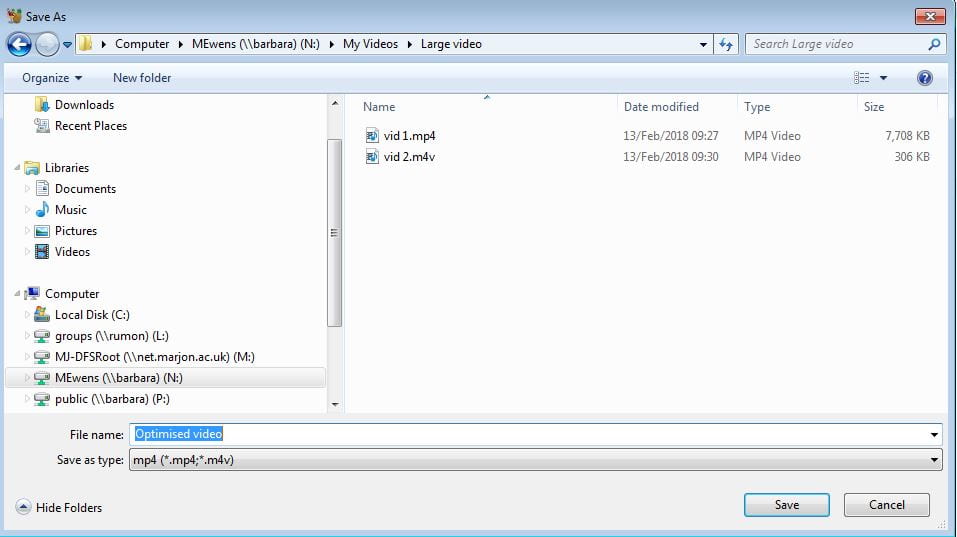
5. You can select the ‘video’ tab to further reduce video size, using some of the advanced settings if you find the video is still too large, but if you just click on the ‘Start Encode’ button, this will usually reduce the file size as required. So just hit the ‘Start Encode’ button and Handbrake will process the video and when finished, your optimised video will be available to upload to Edublogs.
Need further help?
If you’re still struggling, why not watch the below video tutorial, which also contains advanced settings to help you further reduce video size if required.
Activity-based tools
Padlet: How to create interactivity using Padlet in sessions
In this resource, we are going to look at ways you can effectively use technology – specifically smartphones to inject interactivity into your sessions.
What is Padlet, what are you talking about?
Padlet is an online browser-based tool that enables teachers to create interactive boards online, whether these are documents or just web spaces where students can all directly engage and share their content. The spaces can be private spaces, just for you and your students and some of the benefits include being able to embed spaces straight into LearningSpace and also the ability to share Padlets by using the Marjon QR code reader.
Padlet uses
If you want students to collaborate in a live session, for example share images taken on their smartphones related to a field trip exercise – they can do this using your Padlet board. All they’d need to do is zap the Padlet QR code, using the Marjon QR code reader and then find the media they want to share and this will automatically appear within the Padlet board on-screen. This could be a great way of interacting with students and all that would be required is the setup of the Padlet board and access via a browser. Students don’t even need the Padlet app on their smartphone to be able to engage with it.
How do I make this happen?
It’s very easy to setup Padlet, follow the below steps:
1. Visit https://padlet.com
2. Create a new free account
3. Select + Make a Padlet
4. Select a template or from the list of options, or start with a blank (The shelf format is used in this example)
5. Select from a range of wallpaper types, themes and styles
6. Next select the privacy options, for example add a password to protect the wall and then start the Padlet.
7. To add a section, just double click on the board and enter a title and in the below example we’ve added an image to start things off.
When you’ve setup the board how you want it to be, you can then share it with you students. To do this go to ‘Share’ at the top right-hand side of the screen and select the ‘Share/Export/Embed’ tab. You’ll notice a QR code has appeared. Ask the students to open the QR code reader in the Marjon app and then zap the QR code on screen.
tip: if you click on ‘PRINT CODE’ this will display the QR nice and big on-screen.
Remember to setup your desired privacy options in the previous tab, before opening up the sharing options to students
When students scan the code they’ll be able to add their media to the Padlet and this will automatically appear on screen during the session. The beauty of this tool is that the students do not need a login or account to access and it works seamlessly by using the Marjon mobile QR code reader.
Embed a Padlet into LS
If you wish to embed the Padlet board into LearningSpace, follow the below instructions:
1. In Padlet click on ‘Share’ in the top right-hand side of the page then ‘Share/Export/Embed’
2. Click on ‘Embed in your blog or website’ and copy the embed code
3. Login to LearningSpace and navigate to the module where you want to embed the Padlet
4. Turn Editing on and then setup a new label.
5. In the label text box toolbar, select the toolbar toggle to open more options
6. Click on the code icon to open the coding box
7. Paste the copied embed code into the box and select ‘update’ – then Save and return to course and turn editing off.
The only potential drawback of using a free account is that you are limited to 3 boards or Padlets, so if you need to keep them you can only have 3. You can get around this by exporting a Padlet as an image, PDF or CSV file – or simply wipe the content when it’s no longer used and rename the sections.
Watch a case study video featuring how Sarah Martin has used Padlet effectively
Read more about the case study, featuring Sarah Martin.
If you’d like any help setting up your Padlet space or are interested in a demonstration, please contact the Digital Inn
Quizzing
Using Mentimeter in the classroom
Using technology in the classroom may seem daunting and also challenging, particularly using digital tools that may be unfamiliar and especially within a live teaching session. So, how do you start, what tools are available and how can you use them?
This post is the second case study in the series focussing on the use of digital tools in the classroom.
Summary
Miles Smith, Lecturer saw the potential of Mentimeter whilst attending a conference and was impressed with the audience enthusiasm and feedback on the use of the tool. Following on from this, he decided to use the tool, including Padlet with his students to aid reflection, discussion and as a method to test the students’ knowledge during the session. Students have enjoyed the use of the tools to aid collaboration and as a resource that’s available as a reflective document after the session.
What is Mentimeter?
Mentimeter is an easy to use online platform for voting and collaborating, primarily used to support engaging presentations. It’s also used in an educational setting and can easily be introduced during a session to quiz students via a range of different question methods. These include a word cloud, multiple choice, scales, matrix, open-ended and many more question types.
Watch the below film to find out more. (this video will have captions enabled in due course)
Activities
During the session, Miles started by engaging the students in discussion around a topic to get the students thinking. He then used the open-ended question type in Mentimeter to open up a dialogue around the topic area that had been discussed. Students then used the simple code to open their browser and access the question to answer the question, including using their smartphones. Students then posted their views on the question related to the topic discussion. Miles then opened up the session for further discussion around the responses made in groups.
Later on in the session Mentimeter was used to quiz the students about a certain factor that they felt was most influencing relating to the main question posted. This used a different question type with set answers that the students could choose from.
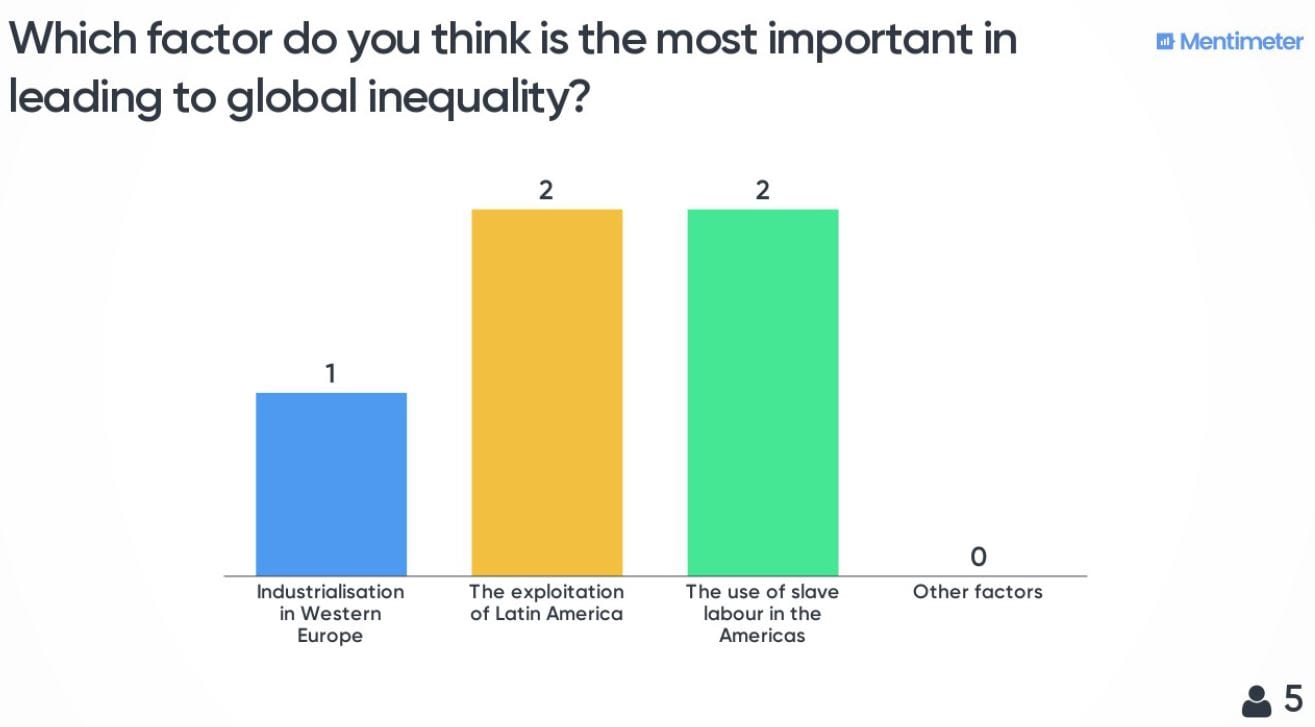
Challenges
Miles couldn’t see many challenges in terms of using the software, it’s ease of use is a very positive factor in terms of setting up presentations and quizzes that can be used during a session.
One of the potential challenges or restrictions of a free Mentimeter account is that you are restricted to using just two slides in any given presentation. Miles didn’t feel that this was a hindrance as it did mean that the tool could only be used sparingly as there could be a temptation to overuse its use in the classroom.
In terms of Padlet, Miles is still developing his use of the tool. Some aspects felt a little clunky, which made it slightly challenging for the students in terms of posting content, which could be posted off-screen or needed to be moved into a better position in the Padlet. You can select different types of template, which have different settings for example a single thread down the page, or templates that work in blocks, so this may alleviate some of these challenges.
Benefits & Outcomes
In terms of the session, the use of Mentimeter and Padlet aided communication and provided students with a more engaging and interesting experience. Feedback on using the tool was instant and Miles was able to very quickly gauge his students’ understanding on a specific topic.
The students all seemed to enjoy the session and they could access Mentimeter from their browser through their laptop computer or their smart device easily.
None of the students had any difficultly accessing the tools and they were all actively involved in shaping the session in a positive way.
I think they liked to see their posts going up anonymously and then for those to be used and engaged with the tutor, Miles Smith
An important consideration is how the tools are used with the students, so if Padlet is used what is the nature of the task? How do you setup purposeful, collaborative tasks that are meaningful to ensure that they are communicative and not something that is about the students working independently and doing it themselves?
The session therefore was complimented by having that group interaction, with groups of two students collaborating on different topics and questions. The technology and use of Mentimeter helped to reinforce learning and the Padlet board is also available to the students as a downloadable PDF in their LearningSpace. This means that they can go back and review content.
It was interesting because it got them to really deliberate and consider different options to develop those critical thinking skills
More details
Head over to Mentimeter and setup a free account to get started: https://www.mentimeter.com
You can also find further digital tools available to try from our Socrative is an online quizzing, formative assessment and student feedback tool. Students can use their own devices to access and engage with the activities.
The Digital Innovation team got together with Vicki Evans from Sports Therapy to discuss how she has used Socrative in her teaching.
For guidance and information on the use of Socrative please visit our guides on the Digital Skills support area
Creating a Socrative account and setting up your room
Socrative is a web based question and feedback tool which can be with students within a lecture or session. Students can access the system from their own devices to answer pre-planned questions or to provide instant feedback. You can have up to 50 students participating in an activity at one time. Socrative can be used from a computer browser or using the specific apps for students and teachers.
Creating an Account
You can quickly and easily set up a free teacher account by going to www.socrative.com. Follow the ‘Get Account’ link and select the ‘Get Free’ option.
This will take you to the registration form where you can input information about yourself, your demographic (including the institution) and your account type (free). Socrative will automatically set you up with a teacher account, as students do not need accounts to participate.
Setting up your room
When you first sign in your will be given a default room name. Your room is the area in which you will create your quizzes and questions and the students will then use the room name to access these.
You can change the details of the default room and add new rooms using the ‘Rooms’ tab along the top of the Socrative homepage. To edit the room name (you may wish to change this to something more meaningful such a module code) click on the pencil icon next to the existing room name.
Once a room is set up you are ready to create a quiz.
Socrative: Creating Quizzes
Once you have set up an account and room to can begin to create a quiz. To create a quiz go to the Quizzes tab and follow the button to ‘Create Quiz’. Socrative allows you to create three types of question; Multiple Choice, True/False and Short Answer. You will be given the option to name your quiz and add questions to it from the 3 choices. Clicking on the 3 options will drop down a menu for adding the question, the answer options and information to explain the correct answer.
Watch the video below to see this in action!
Once you have created a quiz containing your questions you can select ‘Save & Exit’ to return to the Socrative homepage.
Running a Quiz
Space Race
When running a quiz you will be presented with various options. This includes running the quiz normally or as a space race. A space race quiz allows students to be part of teams and race to complete all of the questions in the quiz. The progress of the teams will then be shown on the screen. The space race option can be selected from the Socrative homepage.
Teacher Paced
Once you have chosen to begin a quiz from the homepage you will be given the option to run the quiz at the teachers pace. This will allow you to move through the quiz at your pace ensuring all students answer before any answers are presented or gives chance for discussion related to the question.
Student Paced
There are 2 options for allowing the quiz to be student paced.
Immediate feedback – Students receive immediate right/wrong feedback and explanations after they answer each question. Students answer questions in order and cannot skip or change their answers. You are able to monitor their progress via a live results table.
Student navigation – Students have the ability to edit question responses, skip questions and navigate the quiz their own way. Once they’ve completed the activity they can submit the entire assessment. You are able to monitor their progress via a live results table.
Quick question
The final quiz option available is quick question. This allows you to quickly write a question to present to the students and can provide quick and easy feedback on a topic. You can choose from the same 3 question options as normal.
Student access
For students to be able to access the quiz they can either download the Socrative app or simply go to www.socrative.com and use the menu on the right hand side to select ‘Student Login’. This will then ask them to input the room name and a name. You can decide whether to display names and student results on the screen or keep it annonymous. If you choose to hide the student names and scores you will still be able to view their results and names in the reports afterwards.
Watch the video below to see the teacher and student views simultaneously.
Reports
Once a quiz has been completed there are extensive reports available at both class and student level. These can be exported from the ‘Finish’ button directly after a quiz or from the ‘Reports’ tab on the home page.








